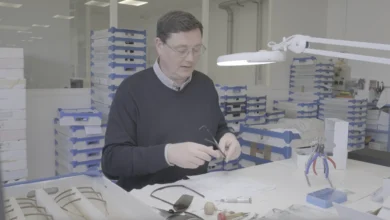Guarding with Gaze: The Strategic Use of CCTV for Home and Business

In today’s world, security has become a paramount concern for homes and businesses alike. With the rise of technology and the availability of more sophisticated surveillance tools, Closed-Circuit Television (CCTV) has emerged as a primary line of defense against intrusion, theft, and other security breaches. A strategic approach to the deployment and use of CCTV camera system can greatly enhance the effectiveness of security measures for both residences and commercial establishments.
The Evolution of Surveillance
Surveillance technology has evolved significantly over the years, with modern CCTV systems offering high-definition video, facial recognition, and remote monitoring capabilities. These advancements have transformed CCTV from a passive security feature that records events for future reference into a proactive component of security operations. Today’s CCTV systems can alert homeowners and business managers in real-time to suspicious activities, enabling a swift response to potential threats.
Strategic Camera Placement
The strategic placement of cameras is of prime importance. Surveillance coverage must be comprehensive and focused on potential entry points and sensitive areas. For homes, this includes front and back doors, windows, driveways, and backyards. In businesses, surveillance should cover entrances, cashier stations, storage rooms, and other critical assets. Camera placement should not only deter would-be criminals but also provide clear images that can aid in identification and legal proceedings if necessary.
Balancing Security with Privacy
While implementing CCTV security system installation surveillance, there’s a fine balancing act between enhancing security and respecting privacy. Whether in a residential or business environment, it’s essential for the deployment of these systems to adhere to legal privacy regulations. Homeowners should avoid placing cameras in areas where they could infringe upon a neighbor’s privacy, and businesses must be cautious not to violate employee or customer privacy rights.
Technological Integration and Smart Surveillance
Modern surveillance systems can be integrated with other technologies such as motion sensors, alarms, and smart home systems. This integration allows for more sophisticated security protocols. For example, a CCTV system can be set up to begin recording when a motion sensor is triggered, thereby conserving storage and focusing attention on potential security events. Remote monitoring via smartphones or computers allows homeowners and business operators to keep an eye on their properties from anywhere in the world.
Video Analytics and Advanced Monitoring
Advances in artificial intelligence have introduced video analytics to CCTV, which enhances the ability to monitor and interpret video feeds. These systems can identify irregular patterns, track movements, and even recognize individual faces, making them incredibly powerful tools in crime prevention and investigation. For businesses, video analytics can also provide insights into customer behavior and operational efficiency.
Ensuring Reliable Operation
For a CCTV system to be effective, it must be reliable. Regular maintenance is critical. Cameras, recording equipment, and backup power supplies should be routinely checked to ensure that they are functioning correctly. Obsolescence is also a factor to consider; surveillance technology is rapidly advancing, and systems can quickly become outdated. Regular updates or replacements may be necessary to maintain a high level of security.
The Human Element
Despite the sophistication of modern Supreme Vision CCTV systems, the human element remains a critical component. Properly trained personnel should be responsible for monitoring live feeds, especially in business settings where large volumes of video data can be overwhelming. The interpretation of surveillance footage is a skill that’s refined through experience, and human vigilance is often the key to identifying and reacting to security threats promptly.
Regulatory Compliance and Best Practices
Adhering to regulatory standards is essential when implementing CCTV surveillance. Regulations may govern the recording, storage, and sharing of video surveillance data. Ensuring compliance not only promotes ethical practices but also protects against legal repercussions. Both homeowners and business owners must be aware of and adhere to these regulations, which can vary greatly by region and industry.
The Impact of Surveillance on Behavior
The presence of surveillance cameras can have a profound impact on human behavior. Not only does it act as a deterrent to criminal activity, but it also promotes accountability and can even improve productivity in business settings. The psychological effect of knowing that one’s actions are being monitored can be a powerful influence on behavior. For instance, employees may be more conscientious, and customer service may improve when cameras are present.
Final Thoughts
The strategic use of CCTV stands at the forefront of modern security measures for both homes and businesses. When implemented thoughtfully, taking into account the aspects of coverage, privacy, technological integration, and compliance, surveillance systems can provide immense peace of mind and protection. However, it’s the combination of advanced technology and human vigilance that ultimately forms the most effective security strategy. As surveillance technology continues to evolve, so too will the methods by which we guard our properties — always with an unwavering gaze.



